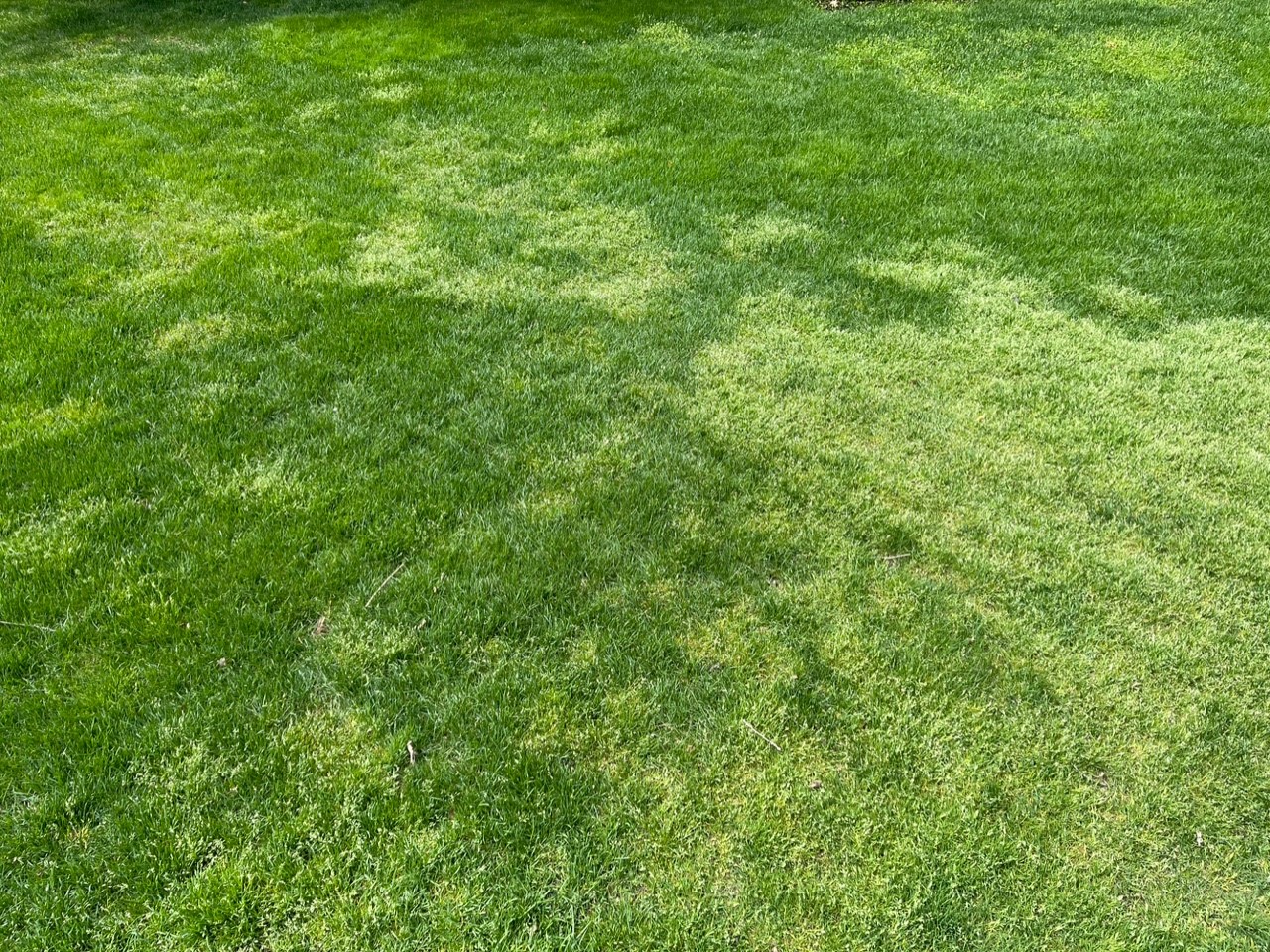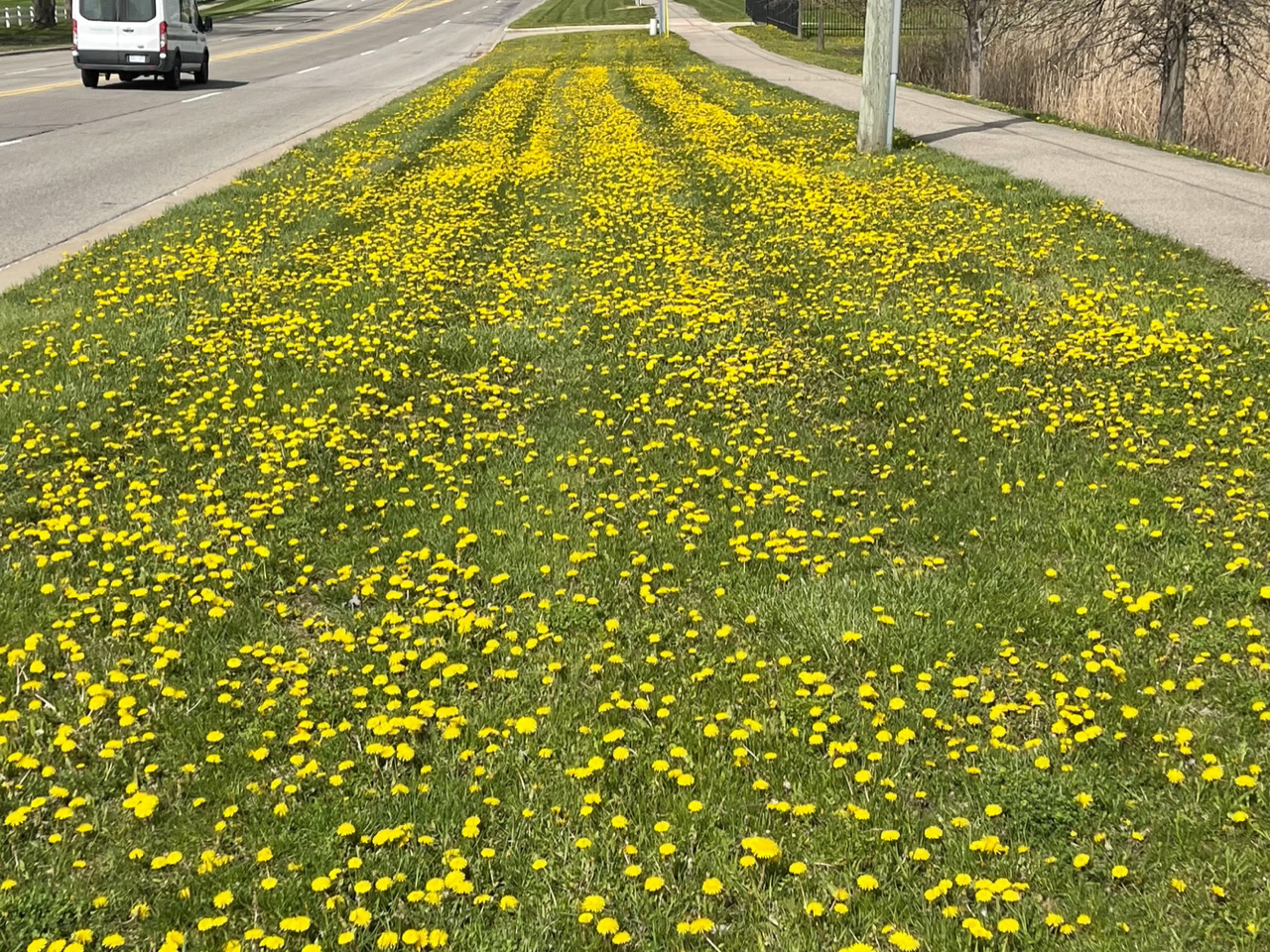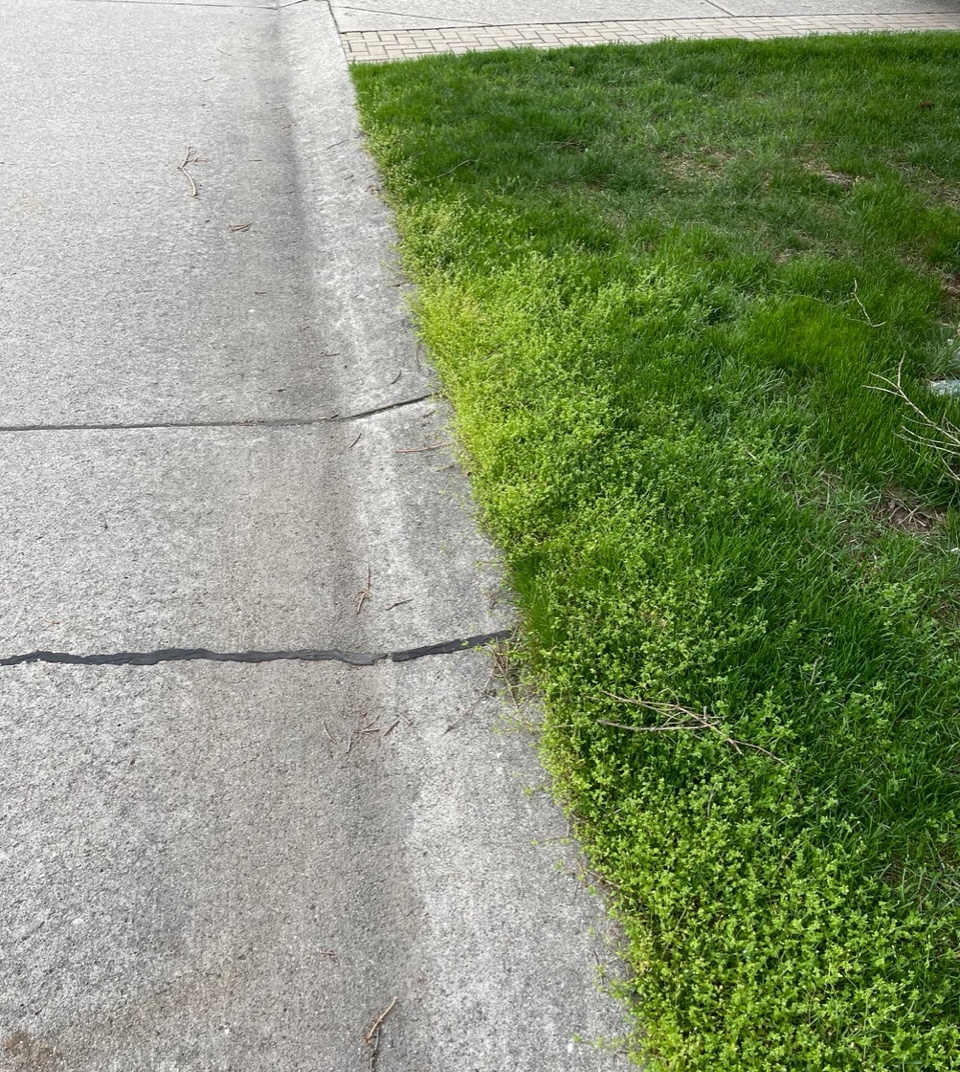Lawn turf update – May 11, 2022
Lawns have been slow growing this spring with the unusually cold and wet conditions, but the recent warmup has lawns and weeds springing to life.

Mowing conditions
Spring always seems to create challenging mowing conditions and this year was no different. From poor mower setup to mowing through soaking wet turf, mistakes this time of year can lead to problems for the rest of the year. Mowing through wet conditions is not only aesthetically problematic due to mud tracking, but the ruts created and turf ripped from stopping, starting and turning will be with you for weeks if not months to come. It’s better to just skip a mowing then create these problems but trying to stay on schedule.
Seedheads in lawns
The common lawn grasses – Kentucky bluegrass, perennial ryegrass, fine leaf fescue, and tall fescue – all produce seedheads as do grassy weeds such as annual bluegrass (Poa annua). Currently, we are seeing peak seedhead production for annual bluegrass. Annual bluegrass generally appears in patches in lawns and at this time of year the seedheads make it even more obvious. There are options for trying to control annual bluegrass in lawns but none of them are easy and generally require multiple applications, often with limited results.
Seedhead production from Kentucky bluegrass and other common lawn grasses varies greatly by cultivar with some producing very few if any seedheads and others being prolific seedhead producers. Seedhead production requires energy from the plant, so it is likely the turf will not only look stemmy due to the seed stalks, but the turfgrass may even lose density during and after seeding.
Consider a fertilizer application following the seedhead flush to help the turf recover, especially if you haven’t fertilized yet this spring or fertilized back in April. Keep the mower blade sharp to ensure a clean cut and don't lower the mowing height to try and remove seedheads. Annual bluegrass produces seedheads below the 0.125-inch mowing height on golf course putting greens, so lowering the mowing height is not going to eliminate seedheads from your lawn.

Dandelions
Dandelions are in peak flower right now in many areas. I’m not going to debate the merits of dandelions. Some might want to make dandelion wine, some may want to add them to their salad, and some may want to get rid of them. If you like the color or have an alternate use for dandelions, please stop reading as in the next paragraph I’ll discuss control options.
There are at least a couple different strategies for controlling dandelions. Applications during flowering and prior to the puffball stage can be effective at burning down the rosette and preventing puffballs, i.e., more dandelion seed. Herbicide applications at the puffball stage can be very effective as this is the time the dandelion is at its weakest because it has just spent all that energy pushing out flowers.

Winter annuals and difficult-to-control broadleaf weeds
In addition to dandelions, many other broadleaf weeds are beginning to flower. Common chickweed, henbit, shepherd’s purse, yellow rocket, corn speedwell, wild violet and ground ivy are all flowering. All but wild violet and ground ivy are winter annuals. The life cycle of a winter annual is they germinate in the fall, overwinter and then flower and produce seed in the spring. After flowering in the spring, winter annuals are usually only two to three weeks from dying. If you apply herbicides, they will be dead and gone in two to three weeks and if you do nothing, they will be dead and gone in two to three weeks. Get it? Erin Hill and Angela Tenney from Michigan State University Plant and Pest Diagnostics recently wrote an excellent Michigan State University Extension article on winter annual identification and management.

Ground ivy (also known as creeping Charlie), wild violet and several speedwells (germander and creeping) are flowering. The flowering period is the best opportunity to kill them until fall arrives. The typical broadleaf combination herbicide containing 2,4-D provides fair control at flowering, but if you can find combination herbicides with the active ingredients quinclorac, triclopyr, fluroxypyr or carfentrazone, you should achieve better than fair control. As with any pesticide application, be sure to read and follow all labeled instructions.



 Print
Print Email
Email
